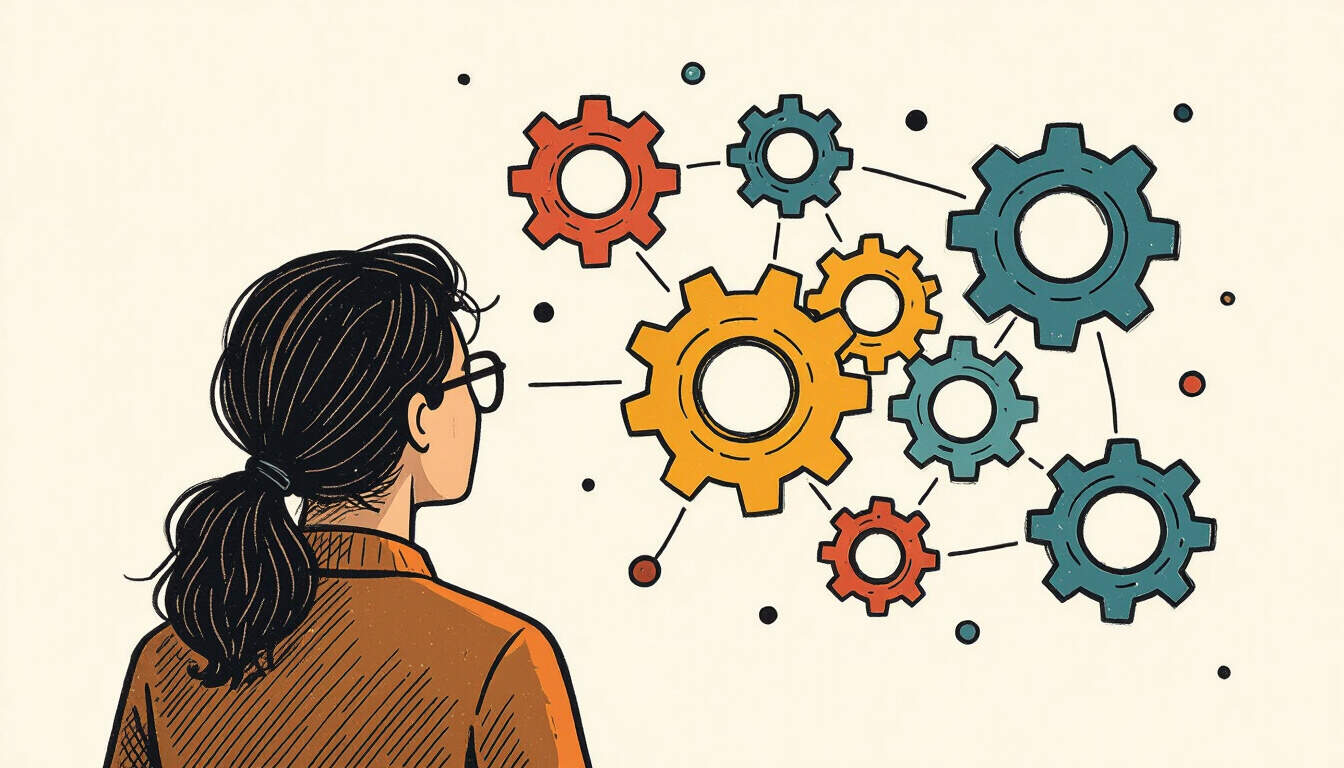Enhancing Decision-Making with Second-Order Thinking and Feedback Loops
 by Verner Mayer
by Verner Mayer
Decision-making frameworks gain depth through second-order thinking, which examines long-term effects, and feedback loops, which reveal system dynamics. This approach aids professionals and students in refining cognitive processes for better outcomes in personal development.

Decision-making frameworks serve as essential tools for structuring choices in various contexts. These frameworks help individuals assess options systematically, leading to more reliable results.
The Role of Second-Order Thinking in Choices
Second-order thinking involves looking beyond immediate outcomes to consider subsequent effects. For instance, a business leader might evaluate a new policy not just for short-term gains but for its wider implications. This method encourages deeper analysis, allowing for anticipation of potential pitfalls.
In practice, second-order thinking can transform routine decisions into strategic ones. A student choosing a major might think about initial career paths and then the evolving job market influences over time. By doing so, they build resilience against unforeseen changes. Feedback loops then come into play, as they illustrate how actions create cycles of influence.
Understanding Feedback Loops
Feedback loops are patterns where an action's results feed back into the system, either reinforcing or balancing the original action. Positive loops amplify effects, while negative loops stabilize them. In daily life, saving money might create a positive loop by generating interest, which encourages more saving.
These loops are crucial in feedback loops for decision-making, as they highlight interconnected elements. Professionals in project management often use them to monitor progress and adjust strategies. For example, in team settings, regular input from members can form a loop that improves collaboration and outcomes over time.
Integrating Second-Order Thinking and Feedback Loops into Frameworks
When combined, second-order thinking and feedback loops enhance traditional decision-making frameworks. Consider a simple framework like pros and cons lists. Adding second-order analysis means examining not only direct advantages but also their ripple effects. A pros and cons list for adopting new technology might include immediate efficiency boosts, followed by long-term adaptation challenges.
This integration fosters systems thinking, where decisions are viewed as part of larger networks. In personal development, individuals might apply these concepts to habit formation. Starting an exercise routine could involve anticipating how it affects energy levels, which in turn influences productivity—a clear feedback mechanism.
Practical Applications for Professionals and Students
For professionals, incorporating these elements can lead to more effective strategies. In finance, investors analyze market trends through feedback loops to predict shifts, ensuring decisions align with long-term goals. This approach minimizes risks by considering how initial investments might trigger further market responses.
Students benefit similarly in academic and career planning. By employing second-order thinking, they can foresee how educational choices impact future opportunities. Feedback from mentors or peers creates loops that refine their paths, promoting continuous improvement. Real-world examples, such as case studies in business schools, demonstrate how overlooking these aspects can lead to failures.
Challenges and Strategies for Implementation
While powerful, applying second-order thinking and feedback loops presents challenges. One common issue is the difficulty in predicting all variables. To address this, individuals can use iterative processes, testing decisions on a small scale first. This allows for observation of emerging loops and adjustments as needed.
In cognitive processes, maintaining awareness of these dynamics requires practice. Simple exercises, like journaling decisions and their outcomes, help build this skill. Over time, such practices enhance personal development by making feedback loops more intuitive.
Benefits for Cognitive Growth and Personal Development
The use of these concepts in decision-making frameworks supports cognitive growth. By regularly engaging with second-order effects, people develop sharper analytical skills. This not only aids in professional settings but also enriches everyday life, from family decisions to community involvement.
In personal development, recognizing feedback loops empowers individuals to break negative cycles and foster positive ones. For curious minds, exploring these ideas opens doors to broader systems thinking, encouraging lifelong learning.
Conclusion
Incorporating second-order thinking and feedback loops into decision-making frameworks offers a comprehensive approach to choices. This method equips professionals, students, and others with tools for thoughtful analysis and adaptive strategies. By focusing on these elements, individuals can achieve more sustainable and effective outcomes in their pursuits.
